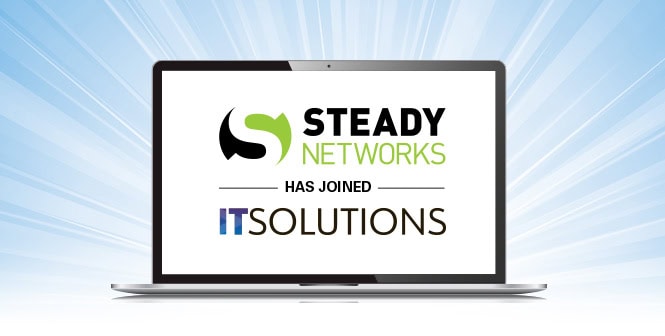Navigating through the IT procurement process often seems like moving through a labyrinth with a blindfold on.
The intricate journey of choosing the correct technology, finalizing contracts, and maintaining cost efficiency without compromising on quality presents a considerable challenge for numerous organizations.
Recent studies highlight a 10.6% worldwide surge in procurement needs coupled with a productivity gap of 7.4% and an effectiveness gap of 7.8%. These figures underscore the widening priorities amidst a scarcity of specialists and shrinking operational budgets.
“A strategic IT procurement strategy is vital for ensuring cost-effective technology investments that are in line with business objectives, paving the way for enduring success,” notes Jonathan Sandmel, CEO of Steady Networks.
In this article, we’ll explore critical IT procurement best practices aimed at simplifying this intricate process, reducing risks, and accurately attaining strategic objectives for your business.
What is IT Procurement, and What are its Main Challenges?
Fundamentally, IT procurement involves the method of finding and purchasing the technology, products, and services essential for businesses to function efficiently.
There are various hurdles, spanning from the swift evolution of technology landscapes to the management of supplier relationships and guaranteeing that expenditures are in harmony with your business’s strategic sourcing plans.
Work With a Trusted Partner That Follows IT Procurement Best PracticesBenefit from strategic sourcing, supplier management, and more with Steady Networks. |
Making Sense of IT Procurement Best Practices
1. Create an In-Depth IT Procurement Strategy
Crafting a well-articulated procurement strategy is crucial for triumph. This strategy must be in harmony with your organization’s overarching aims, integrating elements of cost-saving, supplier management, and strategic sourcing.
Serving as a navigational chart of sorts, this strategy directs your procurement teams in every choice and transaction.
2. Use Digital Procurement Processes to Your Advantage
The adoption of cloud-based solutions and automating procurement tasks significantly trim down manual efforts, boost your efficiency, and decrease the overall cost of ownership.
Digital tools provide procurement professionals with access to real-time data analytics, enhancing decision-making and strategic sourcing endeavors.
3. Prioritize Your Total Cost of Ownership
One common oversight in the IT procurement process is to focus merely on the upfront purchase price.
The best practices in IT procurement spotlight your total cost of ownership, which covers all of the expenses related to the acquisition, deployment, upkeep, and eventual disposal of these critical IT assets.
4. Cultivate Strong Supplier Relationships
Developing solid supplier relationships is vital. More than 71% of businesses recognize that maintaining a roster of at least 50 suppliers is crucial for ensuring smooth supply chain operations and adept supplier management.
A robust partnership can lead to improved pricing, superior quality of products and services, and more advantageous terms. It also secures a more adaptable and dependable supply chain, which is invaluable in critical times.
5. Utilize Strategic Sourcing
Strategic sourcing is the detailed examination of procurement activities to unearth opportunities for cost-saving and efficiency boosts. This may involve negotiating improved terms, consolidating purchase orders, and choosing suppliers that deliver the greatest value.
6. Prioritize Procurement Management and Team Collaboration
Procurement management and team collaboration are key. IT procurement teams should possess defined roles and responsibilities, concentrating on strategic aims.
Making use of collaboration tools and platforms can improve the flow of communication and coordination among team members.
7. Harnessing Data Analytics for Enhanced Decision-Making
Data analytics play a pivotal role in contemporary IT procurement processes. Through the scrutiny of procurement data, entities can pinpoint trends, refine their procurement cycles, and influence educated decisions that bolster long-term organizational success.
8. Embrace Cost-Efficiency in Procurement Activities
Achieving cost-effectiveness goes beyond expense reduction. It involves augmenting the value derived from investments. Critical practices include assessing diverse suppliers, exploring alternative goods and services, and negotiating advantageous terms.
9. Incorporating Performance Reviews for Continuous Improvement
Regular performance reviews are an essential aspect of the IT procurement best practices framework, serving as a mechanism for continuous improvement.
By systematically evaluating the effectiveness of procurement activities, procurement teams can identify areas of success and pinpoint opportunities for enhancement.
This management process involves assessing the performance of suppliers, the efficacy of procurement strategies, and the impact of procurement management on achieving cost-effective outcomes.
10. Uphold Compliance and Mitigate Risks
Adhering to legal and regulatory compliance mandates is imperative. IT procurement processes must incorporate safeguarding measures to alleviate risks, such as cybersecurity threats, data protection, and contractual disagreements.
Failure to meet compliance requirements for your industry can result in fines, sanctions, legal issues, and reputational damage, not to mention costs that can reach $14.82 million or more.
11. Fostering an Environment for Ongoing Enhancement
The procurement landscape is in a constant state of flux. That’s why it’s imperative for organizations to cultivate a mindset geared towards ongoing enhancement, consistently reassessing and honing their procurement processes.
Doing so helps companies stay in tune with evolving technologies, market dynamics, and organizational objectives.
A Guided Walkthrough of IT Procurement Process Best Practices
Here is a streamlined guide that delineates the principal phases in the IT procurement process. This guide is intended to augment the best practices previously discussed by offering a concise, straightforward blueprint for procurement professionals.
| Step | Activity | Description |
| 1. Needs Identification | Identify and document your specific IT needs. | Begin with a clear understanding of what IT resources are needed based on the current and future business requirements. |
| 2. Specification Development | Develop detailed specifications for the required IT solutions. | Technical and functional requirements are detailed to ensure that all proposals meet the business needs. |
| 3. Supplier Research | Conduct research to find potential suppliers. | Identify and qualify suppliers that have the capabilities to fulfill the requirements. |
| 4. Request for Proposal (RFP) | Issue RFPs to solicit bids from suppliers. | A formal process to invite suppliers to bid on the specified IT solutions. |
| 5. Proposal Evaluation | Evaluate received proposals against set criteria. | Proposals are assessed based on criteria such as cost, capability, and fit with needs. |
| 6. Negotiation and Selection | Negotiate terms, prices, and select the best supplier. | Engage in discussions with suppliers to finalize the contract terms, focusing on value and service. |
| 7. Contract Finalization | Finalize and sign the contract with the chosen supplier. | A formal agreement is made, detailing the terms of service, deliverables, and pricing. |
| 8. Order Management | Process the purchase order and manage the order cycle. | Order placement and tracking to ensure timely delivery of IT solutions. |
| 9. Delivery and Implementation | Oversee the delivery and implementation of IT solutions. | Ensure the IT solutions are delivered as agreed and fully operational. |
| 10. Performance Evaluation | Assess supplier and IT solution performance. | Evaluate the effectiveness of the IT solution and supplier performance to ensure objectives are met. |
| 11. Continuous Improvement | Incorporate feedback to refine procurement process. | Use insights gained from evaluations to make ongoing improvements to the IT procurement process. |
| More articles you might like: |

Choose a Partner That Follows Every IT Procurement Best Practice
The challenges associated with IT procurement best practices can seem daunting, but adopting the correct methodologies enables companies to adeptly maneuver through this intricate area.
By concentrating on strategic sourcing, cost-saving, and streamlined procurement processes, businesses like yours can convert IT procurement into a strategic asset.
|
Trusted Managed IT Services Near You |
Steady Networks is a proven leader in this space, with over 12 years of experience as a premier managed services provider. We understand the complexities of IT procurement and are ready to help you get more value out of your technology investments.
Reach out to us today to schedule a free consultation and begin the journey of evolving your IT procurement strategy into a conduit for long-term success.


